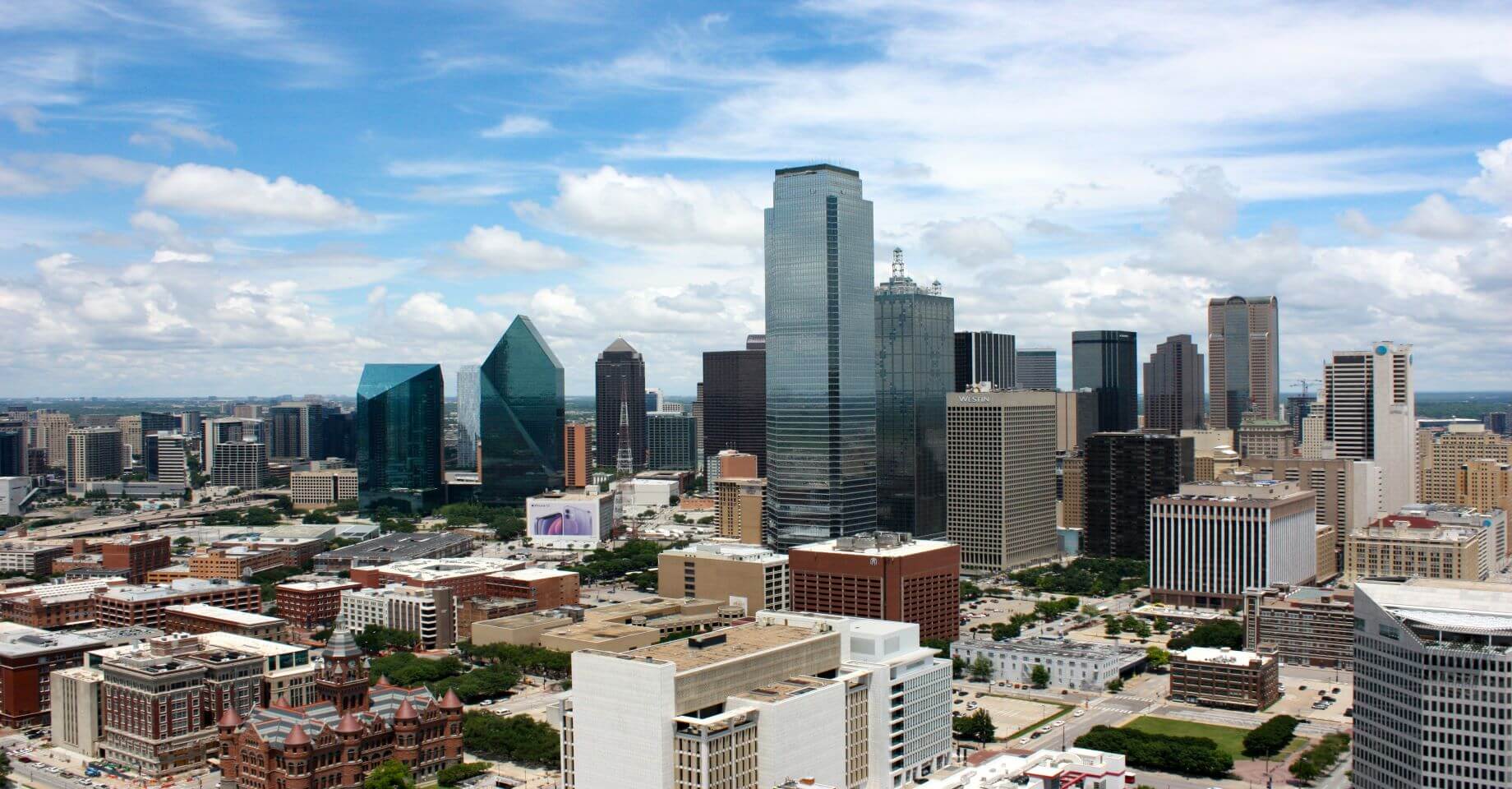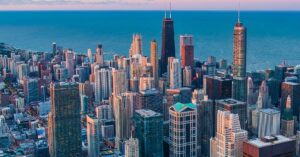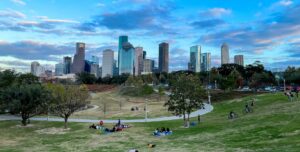Recent commercial real estate activity across Dallas reveals a clear pattern. Corporate campus expansion, accelerated data center infrastructure, and targeted transportation-linked development. These projects illustrate how the region continues to attract major corporations, support surging demand for digital infrastructure, and build new mobility-related assets, all while riding a wave of population growth and investor confidence. The following profiles highlight three representative developments driving this trend.
Goldman Sachs’ New Dallas Campus
Goldman Sachs is spending $500 million to build a major new office campus in the Victory Park area of Dallas, with plans to open in 2028. The project includes a large 800,000 square-foot office tower, rooftop gardens, a public park covering 1.5 acres, and on-site wellness and childcare facilities. It will also have underground parking to make the area easier to walk around. This project is a strong example of a larger trend where big companies are moving to or growing in Dallas by creating full-featured, employee-friendly campuses that show long term commitment to the region.
GigaPop Data Center in Red Oak
Announced in early 2025, the GigaPop project is a $1 billion data center campus covering 800,000 square feet, planned near Red Oak, about 18 miles south of Dallas. It is a joint effort by Gigabit Fiber, Lincoln Property Company, and Tradition Holdings. GigaPop is designed to support cloud and AI technologies with powerful, high-speed systems that will use up to 540 megawatts of electricity. This project highlights how the Dallas Fort Worth area is becoming one of the biggest data center locations in the country and shows its growing importance in supporting the nation’s digital infrastructure.
McKinney National Airport Expansion
In the northern suburbs, McKinney National Airport is getting a $79 million upgrade that includes building a new 46,000 square foot terminal with four gates, with room to expand to six. The project will also add rental car services and parking for nearly 1,000 cars. The terminal is expected to be finished by late 2026 and will support new regional airline service for about 200,000 passengers each year. Backed by both local and federal funding, this project connects transportation improvements with the growing needs of the suburbs and supports better mobility in one of the fastest-growing areas north of Dallas.



